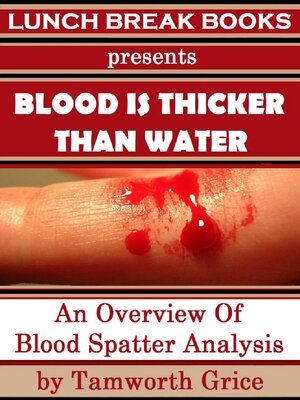
Sign up to save your library
With an OverDrive account, you can save your favorite libraries for at-a-glance information about availability. Find out more about OverDrive accounts.
Find this title in Libby, the library reading app by OverDrive.



Search for a digital library with this title
Title found at these libraries:
| Library Name | Distance |
|---|---|
| Loading... |
As Dexter and CSI fans and most other people know, a crime scene may involve several of the following:
—blood droplets of various shapes and sizes
—blood sprays, spurts, and splashes
—blood flows, pools, and transfers
—dried blood
—projected blood
—cast-off blood
Blood spatter analysis uses this blood to recreate a crime and pursue a guilty verdict for the criminal and justice for the victim.
So where did this relatively new area of forensics come from? How does a person become a blood spatter analyst? What does a blood spatter analyst do? And perhaps most importantly, how can blood evidence help solve a criminal case and result in a courtroom verdict?
This affordable little eBook answers these questions, and more!
It's great for Dexter or CSI fans, crime buffs, and home schoolers.
This book is approximately 7,000 words—-perfect for reading on your computer, android phone, e-reader, or other electronic device. That means you can read it and learn something new, no matter where you are. Short enough to be read in 1 or 2 lunch breaks, this ebook delivers a fascinating overview of a compelling subject. Now instead of just wasting time, you can spend your lunch break learning something new—with this Lunch Break book!
Excerpt:
"SPURTING (also called arterial spurting) occurs during an attack that yields medium- or high-velocity bloodstains, when a victim's arteries are severed or otherwise damaged. If the damaged arteries are close to the skin, the victim bleeds quickly and blood spurts from wounds, each spurt occurring with a beat or pump of the heart. A large amount of blood is projected, leaving a distinctive arched bloodstain pattern. As the victim bleeds profusely, his or her blood pressure declines and the spurting becomes less intense; therefore, spurting bloodstains vary in size, becoming smaller and projected shorter distances. This spatter is typically seen on a vertical surface, such as a wall, in arch-like shapes of decreasing sizes. As noted earlier, arterial blood is rich in oxygen and has a bright red color."







